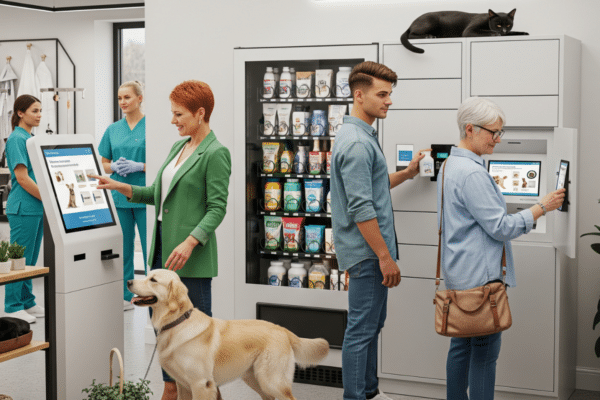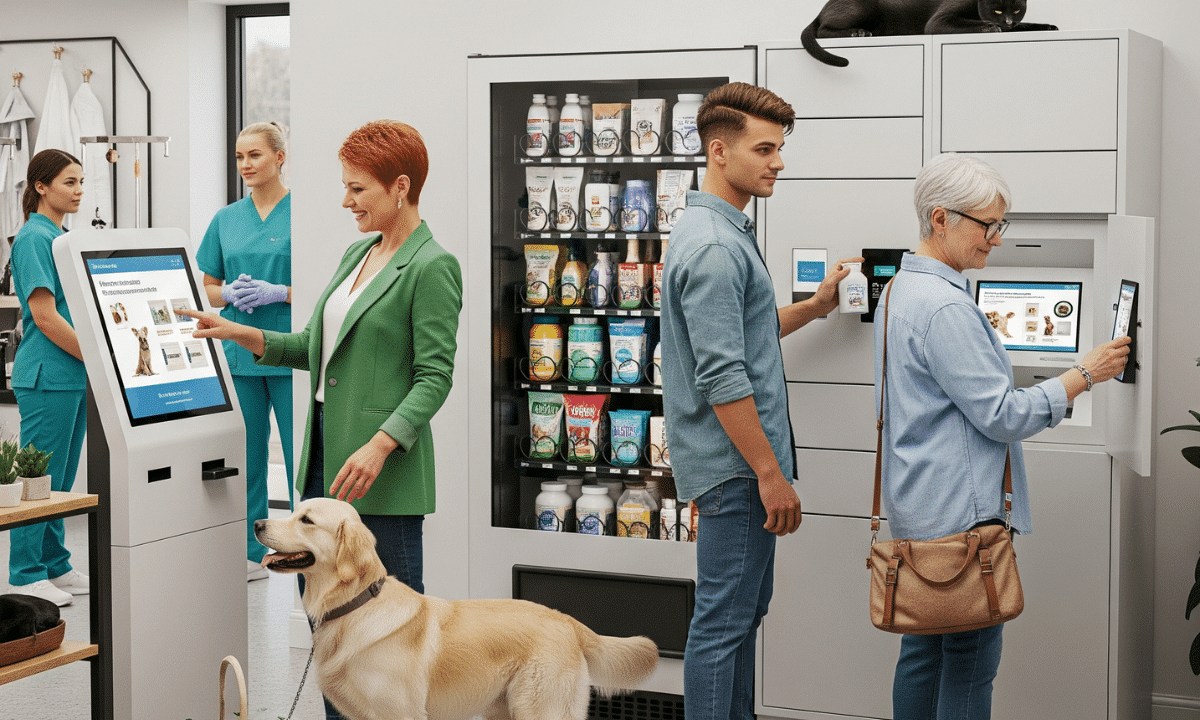
A Detailed Guide to E-Commerce Merchandising
Today, a website home page has become a retail sales engine. E-commerce has revolutionized how companies sell products, build brand identity, and interact with customers. As more sales shift online, businesses must have an effective ecommerce merchandising strategy in place to succeed in the digital marketplace.
Ecommerce merchandising has its own set of challenges and best practices when compared to traditional visual merchandising. An effective strategy requires understanding your customers, analyzing data, optimizing listings, employing generated content, optimizing SEO, using high-quality imagery, leveraging compelling and personalized recommendations, and employing strategic cross-selling opportunities.
A Detailed Guide to Ecommerce Merchandising
Ecommerce merchandising refers to the act of promoting specific products or a group of products to drive sales in online stores. The process involves deploying an ecommerce merchandising strategy and tactics to enhance user experiences and influence their buying decisions. A well-executed strategy helps businesses optimize screen real estate and establish a strong brand identity.
Definition of Ecommerce Merchandising
In simple terms, ecommerce merchandising is an online retail strategy that applies traditional merchandising principles to a digital environment. As with merchandising for brick-and-mortar stores, digital merchandising techniques for ecommerce stores involve displaying products attractively to strengthen brand awareness and entice online shoppers.
However, things are done a little differently in the digital space. Digital merchandising techniques include optimizing SEO to improve search results, enhancing product pages, and segmenting customers to help them identify and purchase products quickly and efficiently.
The primary goal of a digital merchandising strategy is to enhance the shopping experience for online shoppers, thereby increasing sales and generating revenue growth.
The Importance of Ecommerce Merchandising for Online Businesses
The implementation of a good ecommerce merchandising program is crucial for many reasons. It helps online businesses manage their screen real estate efficiently, enhance product discovery, and capitalize on consumer data to boost sales. Successful ecommerce merchandising efforts contribute to the improvement of important business metrics such as conversion rates, trending products, average order values, customer loyalty, and overall revenue growth.
Online merchandising also has a significant impact on search bar functions, as it allows online retailers to curate search results and personalized product recommendations based on trends, desired user experience, and sales objectives.
Ecommerce Merchandising vs. Traditional Merchandising
Product merchandising primarily focuses on traditional visual merchandising, such as product grouping and placement. Merchandisers use eye-catching displays and interactive elements to draw customers in and encourage them to make a purchase. Ecommerce merchandising goes a step beyond. It uses tools like artificial intelligence to personalize user experiences and make personalized product recommendations based on search queries, customer habits, relevant trending products, past purchases, and browsing behavior.
Moreover, unlike traditional brick-and-mortar stores, ecommerce sites can leverage shopper data to drive strategies such as relevant content generation, targeted email marketing, social media channels, and personalized landing pages with product recommendations to enhance the overall user experience.
Curious about maximizing in-store sales? Learn more about retail merchandising techniques to enhance your physical store’s performance.
Best Ecommerce Merchandising Strategies
Search Engine Optimization (SEO) in Ecommerce Merchandising
SEO plays a critical role for an ecommerce merchandiser. It optimizes web pages for search engines, increasing the likelihood that a retailer’s page will appear at the top of search results, instantly making their online store more visible to potential customers.
Things like page titles, meta descriptions, URL structures, relevant content, and image alt tags play an instrumental role in SEO. By practicing good SEO, online businesses can benefit from overall website traffic, brand visibility, specific product promotion, better user experiences, and increased sales.
Use of Personalization and Customization Techniques
With an increasing demand for personalized online shopping experiences, customization techniques are more important than ever. Machine learning (ML) and artificial intelligence (AI) can greatly contribute to personalizing user experiences.
These advanced technologies enable businesses to analyze vast amounts of customer data, identify patterns, and make intelligent decisions in real time. By leveraging AI and ML, ecommerce businesses can personalize the shopping experience, offer more targeted product recommendations, and improve overall customer satisfaction.
Here are some key benefits of AI and ML in ecommerce merchandising:
- Personalized product recommendations based on individual customer preferences and browsing history
- Dynamic pricing optimization to maximize revenue and competitiveness
- Improved search functionality with natural language processing and semantic understanding
- Automated product tagging and categorization for efficient product cataloging
- Predictive analytics to forecast demand and optimize inventory management
A popular method of personalization is using faceted search options, which allow customers to refine their search queries based on specific attributes. A faceted search enhances the customer experience by giving each individual greater control over their own search results, making product discovery easier and more efficient.
Product Displays and Visual Merchandising Online
Product display and visual merchandising are both important ways to captivate customers and drive ecommerce sales, mirroring the impact of physical store layouts on purchasing decisions.
To create visually appealing and effective product displays, ecommerce merchandisers should:
- Use high-quality, professional product images that showcase the item’s features and benefits
- Provide multiple images or videos showing the product from different angles and in use
- Ensure that product images are properly sized and optimized for fast loading times
- Use consistent formatting and styling across all product pages to create a cohesive brand identity
Leveraging Social Media for Ecommerce Merchandising
Social media has opened a new discovery platform for e-commerce merchandising. It allows online retailers to showcase their products while simultaneously engaging with consumers to build a dynamic brand identity.
Successful online merchandisers utilize social media platforms to communicate their brand values, showcase their trending products, make product recommendations, and even sell directly via features like Instagram Shop. This enhances both the shopper’s experience and the brand’s visibility.
Product Cataloging and Inventory Management
Effective product cataloging and inventory management are essential components of successful ecommerce merchandising. A well-organized and comprehensive product catalog makes it easy for customers to find and purchase the items they need, while robust inventory management ensures that popular products are always in stock and ready to ship.
To create a user-friendly product catalog, ecommerce merchandisers should:
- Use clear, concise product titles and descriptions
- Organize products into logical categories and subcategories
- Provide detailed product specifications and attributes
- Include high-quality images and videos showcasing products from multiple angles
Website Navigation and Seamless User Experience
A seamless user experience and intuitive website navigation are critical components of successful ecommerce merchandising. Customers should be able to easily find the products they’re looking for, navigate between different categories and category pages, and complete their purchases without frustration or confusion.
Ecommerce merchandisers should prioritize clear category names, logical organization, and an effective search function to create user-friendly navigation. Implementing faceted navigation and ensuring mobile responsiveness is also important. These elements combined create a smooth shopping experience that encourages customer satisfaction and repeat visits.
Want to dive deeper into inventory management? Discover more about inventory merchandising and how it can boost your e-commerce success.
Unlocking Ecommerce Success through Merchandising Tools and Best Practices
Implementing Ecommerce Merchandising Tools
The first step of your ecommerce merchandising strategy involves the successful implementation of merchandising ecommerce tools. These tools often include features like product grouping, faceted search, and product recommendations, which are key elements to effectively promoting and selling specific products. By using ecommerce merchandising tools, you can organize your online store in a manner that best showcases your products and enhances the shopping experience of your online customers.
Gone are the days when a simple product focus was enough. Ecommerce merchandising tools leverage new technologies and customer data to create personalized recommendations, thus boosting sales and revenue growth.
Using Analytics and Data in Ecommerce Merchandising
Customer data is key to optimizing your merchandising strategy. Some tools, for example, provide invaluable insights into user behavior on your ecommerce site, from the search query that led them to your site to their interactions with your landing page.
Data in analytics is more than just a business metric. It’s an insight into the customer’s journey, highlighting what’s working in your strategy and where improvements are necessary. So, from a digital merchandising perspective, data from your search bar might reveal what products are trending, which can help you optimize the home page of your online store.
Top Practices and Tips for Effective Ecommerce Merchandising
Product Display and Description Best Practices
Visual merchandising in your online store is crucial for enhancing user experiences and boosting sales for your ecommerce business. High-quality photos of your products and product descriptions that accurately and enticingly represent them are key elements.
For example, let’s take a product page for organic milk in an online store. Clear, attractive images, along with a product description that details this milk’s nutritional benefits, storage guidance, and usability, have a significant influence on purchase decisions.
Price Optimization Techniques
Price optimization involves finding the delicate balance between enticing customers with competitive pricing and maintaining profitability. AI and machine learning can help you find this balance by analyzing customer behavior, demand patterns, and competitive pricing to help pin down the optimal price point.
A good idea here: pricing must always align with your brand identity. If you position yourself as a luxury or premium brand, drastic discounts may harm this perception and turn away your target audience.
Use of Promotions, Deals, and Discounts
The allure of deals and discounts has always held sway over customers, and this remains true when it comes to ecommerce merchandising strategies. Thoughtfully designed promotions can significantly increase sales, especially when tailored to events, festivals, or customer shopping habits.
The Future of Ecommerce Merchandising
The future of e-commerce merchandising is rapidly evolving with advancing technology. Trends indicate that AI, mobile-centric strategies, and ethical considerations will play larger roles in shaping the future of online merchandising.
Role of AI and Machine Learning in Ecommerce Merchandising
These exciting technologies are increasingly contributing to the transformation of e-commerce merchandising strategies by promoting a more personalized, customer-centric approach to the product recommendation process. Large language models and predictive algorithms also enhance product discovery by accurately matching user search queries to search results. They can even predict shopping habits, enabling your e-commerce merchandising to adapt on the fly to customer behavior.
Mobile Ecommerce Merchandising Trends
The ongoing shift towards mobile browsing makes it imperative for digital retailers to optimize their ecommerce sites. Presenting search results and product pages in a scrollable format and prioritizing screen real estate for high-performing products can enhance the mobile shopping experience. Additionally, integrating mobile payment solutions and offering a seamless checkout process may hold the key to driving profitable ecommerce merchandising.
Sustainable and Ethical Ecommerce Merchandising
way to build trust and promote ethical commerce. Moreover, showcasing a brand’s corporate social responsibility efforts on its home page can further strengthen its brand identity.
E-commerce merchandising encompasses many moving parts and is critical for standing out in the digital marketplace. By optimizing product listings through compelling titles, descriptions, images, and strategic cross-selling, online retailers can effectively showcase their products to drive more sales. As the global shift to ecommerce continues, focusing on the customer experience and ease of purchase is paramount. With the tips outlined in this guide, ecommerce businesses can start fine-tuning their digital merchandising to highlight their unique value, streamline the path to purchase, and ultimately boost their online revenue and success. Implementing impactful merchandising takes experimentation and dedication but pays dividends in online sales and overall revenue growth.
Frequently Asked Questions
What is ecommerce merchandising and why is it important?
Ecommerce merchandising is the practice of promoting products online to drive sales and enhance the user experience. It’s crucial because it helps businesses manage their digital presence effectively, improve product discovery, and increase conversion rates, ultimately leading to revenue growth.
How does ecommerce merchandising differ from traditional retail merchandising?
While traditional retail merchandising focuses on physical product placement, ecommerce merchandising leverages digital tools and customer data to personalize the shopping experience. It uses techniques like AI-driven product recommendations, SEO optimization, and dynamic content generation to enhance user engagement and drive sales.
What role does SEO play in ecommerce merchandising?
SEO is critical in online merchandising as it helps improve the visibility of an ecommerce website in search engine results. By optimizing elements like page titles, meta descriptions, and content quality, businesses can attract more potential customers to their online store, thereby increasing traffic and sales opportunities.
How can businesses leverage personalization in their ecommerce merchandising strategies?
Personalization in ecommerce merchandising involves using customer data and AI to tailor the shopping experience to individual preferences. This can include customized product recommendations, personalized email campaigns, and adaptive website content, all of which aim to improve customer engagement and increase the likelihood of purchases.








